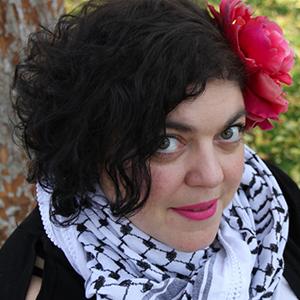Randa Jarrar, an English professor at Fresno State, is rightfully in hot water. In a Twitter tirade, she called the recently deceased Barbara Bush an "amazing racist" and said she was "happy the witch is dead." For good measure, she wished death upon the rest of the Bush Family.
Let's set aside the issues of free speech and tenure to focus on a bigger underlying concern: The psychology of pure, unadulterated hatred. How does a person become so consumed with animosity for a fellow human being?
Hatred is a toxic emotion that can be understandable, such as when a person is the victim of a crime. Likewise, hatred of historical monsters like Adolf Hitler and Osama bin Laden are understandable, even if the crimes were committed against other people. Yet, even under these extreme circumstances, every major religion warns against hatred. Hatred consumes a person, and it makes one do and say things that are destructive. That's why, "Love thy enemy," is such an important (yet monumentally difficult) command. It helps keep society from falling apart.
Despite the widespread prevalence and societal consequences of hatred, the psychology literature doesn't have much to say about it. Yes, there is plenty of research on racism, sexism, and other "-isms" or "-phobias," but this hatred is directed at entire groups of people. But there is little on the psychology of personal hatred, i.e., the hatred one person feels for another individual person. How does this happen, especially if the people don't even know each other?
The Psychology of Pure Hate
A behavioral analyst for the FBI provides some insight. In an article about the psychopathology of hate, Dr. Jack Schafer describes a "seven-stage hate model" for Psychology Today. Though his article is about the behavior of hate groups, such as Neo-Nazis, his model appears to have some applicability to personal acts of hatred toward individuals. In summary, the seven stages are:
- The haters find other haters to validate their hatred.
- The hate group defines itself through symbols, rituals, and mythologies.
- The hate group disparages the target.
- The hate group taunts the target.
- The hate group attacks the target without weapons.
- The hate group attacks the target with weapons.
- The hate group destroys the target.
Obviously, Steps 5-7 don't apply here. But, Steps 1-4 certainly do.
Step 1. It's clear from her own words that Jarrar hates the Bush Family. It is rather easy to find plenty of other people who feel the same way in academia and especially online. During the 2000's, the hatred of President George W. Bush was so common (and irrational) that psychiatrist and TV pundit Dr. Charles Krauthammer coined the tongue-in-cheek term "Bush Derangement Syndrome."
Step 2. If you have the stomach to do so, Google the term "Bush protest" and look through the images. Protesters regularly portrayed the President as Hitler or a terrorist and burned, hung, or stabbed him in effigy. The images are quite sickening. Jarrar harkened back to this hateful mythology when she referred to the Bush Family as "genocidal."
Step 3. Without question, Dr. Jarrar disparaged the target of her hatred, the Bush Family. If somebody (perhaps a Fresno State investigative team) does some digging, it probably wouldn't be difficult to find a very long history of her engaging in this type of behavior against the Bush Family and probably many others.
Step 4. Once again, without question, Dr. Jarrar was taunting the Bush Family. Her mockery of Barbara Bush recalls the callousness and hatred displayed by the Westboro Baptist Church at soldiers' funerals.
Thankfully, her hatred did not progress further, but Step 4 is bad enough. Randa Jarrar is in need of some serious self-reflection and soul-searching, as improbable as that seems.




